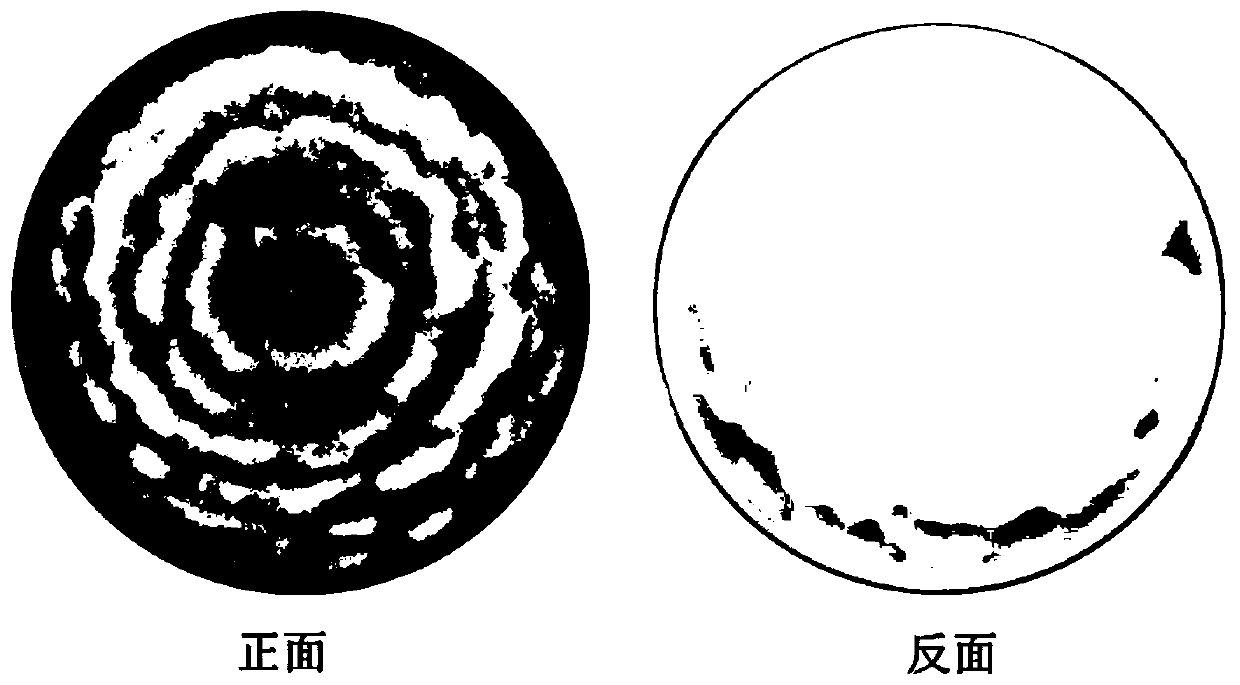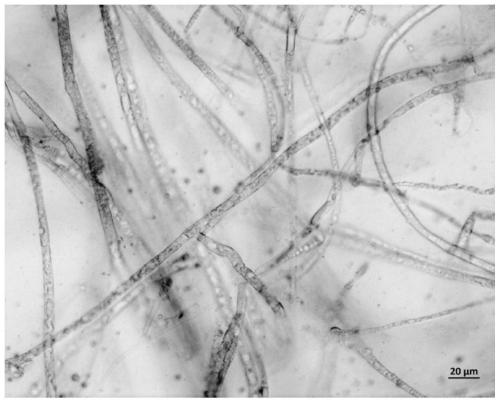Atractylodes macrocephala endophytic fungus and application thereof in preventing and treating root rot of atractylodes macrocephala
An endophytic fungus and root rot technology, applied in the field of plant disease prevention and control, can solve the problems of Atractylodes rhizoma root rot that have not been reported, and achieve the effect of obvious effect and broad application prospect.
- Summary
- Abstract
- Description
- Claims
- Application Information
AI Technical Summary
Problems solved by technology
Method used
Image
Examples
Embodiment 1
[0032] The endophytic fungus is separated and obtained according to the following steps: take fresh rhizomes of Atractylodes macrocephala and rinse them under clean water to remove surface impurities. Cut the rhizomes of appropriate size, wrap the gauze, and perform three-step surface disinfection treatment: the volume fraction is 75% ethanol solution for 1 min, the volume fraction is 1% sodium hypochlorite solution for 3 minutes, and the volume fraction is 75% ethanol solution for 30 seconds. Then, a small piece of about 0.5cm×0.5cm in the middle part of the tissue was cut and inoculated into a sterile isolation and culture plate with penicillin (50mg / L), 4 pieces per dish. Seal with parafilm, record number, and incubate for 7-12 days at room temperature. Regularly observe the growth of the colony, and select a single target colony according to its colony morphology and color. Under aseptic conditions, pick the tip tissue block of the target hyphae and transfer it to a freshl...
Embodiment 2
[0036] Take a cryopreservation tube of the AM478 strain, under aseptic conditions, use an inoculation needle to pick up a few hyphae and place them in a newly prepared PDA medium for activation, and cultivate them in a shade at 26°C until they are mature; the formula of the PDA medium is: 200g potatoes, 20g Glucose, 1000mL distilled water, 15g agar, natural pH. Under aseptic conditions, scrape the hyphae with a sterile spatula, rinse with sterile water, filter with sterile gauze, and dilute the filtrate with sterile water to a 25 mL volumetric flask; under aseptic conditions, draw 100 μL of spore suspension, Adjust the spore concentration to 2.0~2.5×10 with a hemocytometer 6 The AM478 spore suspension was obtained by spores / mL; the treatment group was irrigated with Atractylodes macrocephala every 3d at a dosage of 5mL / time for 30d, with an equal volume of distilled water as the control group, and 30 biological replicates were done. Investigate and count the number of diseased ...
Embodiment 3
[0039] Take the root tips of the Atractylodes macrocephala plant treated with AM478 spore suspension, fix it with 4% glutaraldehyde in volume fraction at 4℃ overnight, rinse with phosphate buffer for 4-6 times, then use absolute ethanol for gradient dehydration, dry and spray Gold was observed by transmission electron microscope. ROS level detection: Put the roots of Atractylodes macrocephala into a mortar, grind in an ice bath, and centrifuge at low temperature for 20 minutes (4°C, 12000rpm / min). Take 0.5mL enzyme solution, add 0.5mL PBS and 1mL hydroxylamine hydrochloride, shake and mix, incubate at 25℃ for 1h, then add 1mL each of p-aminobenzenesulfonic acid and α-naphthylamine, and measure OD after incubation and centrifugation 530 . A quantitative detection kit for plant oxidase activity colorimetry (NADPH method) was used to detect NADPH oxidase activity. NO content detection: Take 1.5cm root tip of Atractylodes macrocephala and immerse it in DAF-FMDA fluorescent dye sol...
PUM
 Login to View More
Login to View More Abstract
Description
Claims
Application Information
 Login to View More
Login to View More - R&D
- Intellectual Property
- Life Sciences
- Materials
- Tech Scout
- Unparalleled Data Quality
- Higher Quality Content
- 60% Fewer Hallucinations
Browse by: Latest US Patents, China's latest patents, Technical Efficacy Thesaurus, Application Domain, Technology Topic, Popular Technical Reports.
© 2025 PatSnap. All rights reserved.Legal|Privacy policy|Modern Slavery Act Transparency Statement|Sitemap|About US| Contact US: help@patsnap.com



